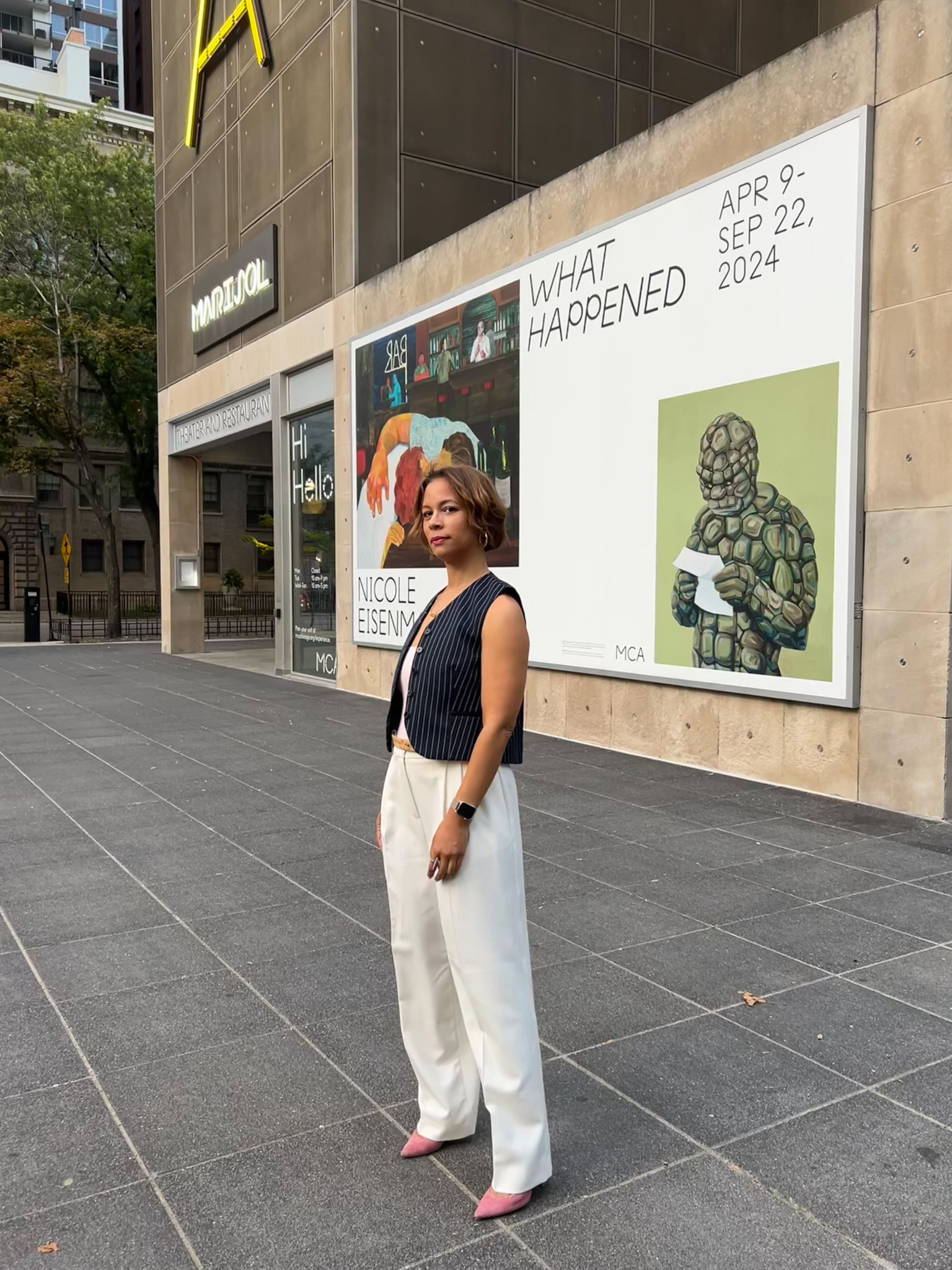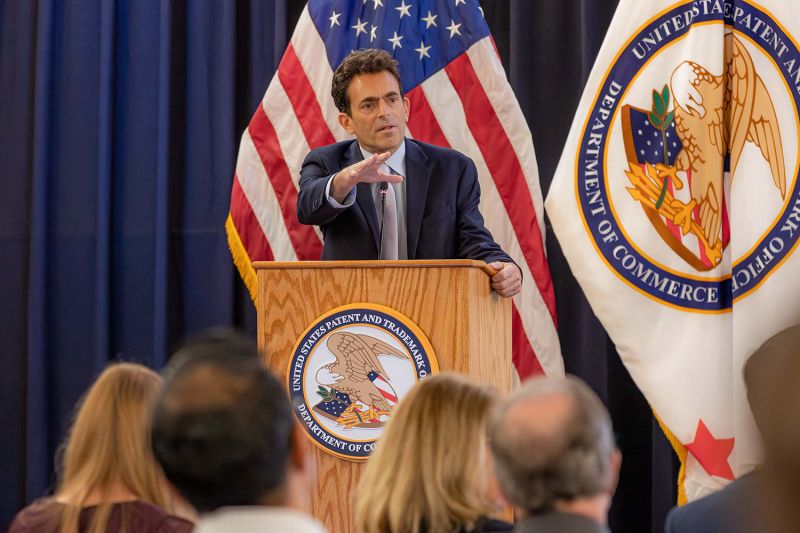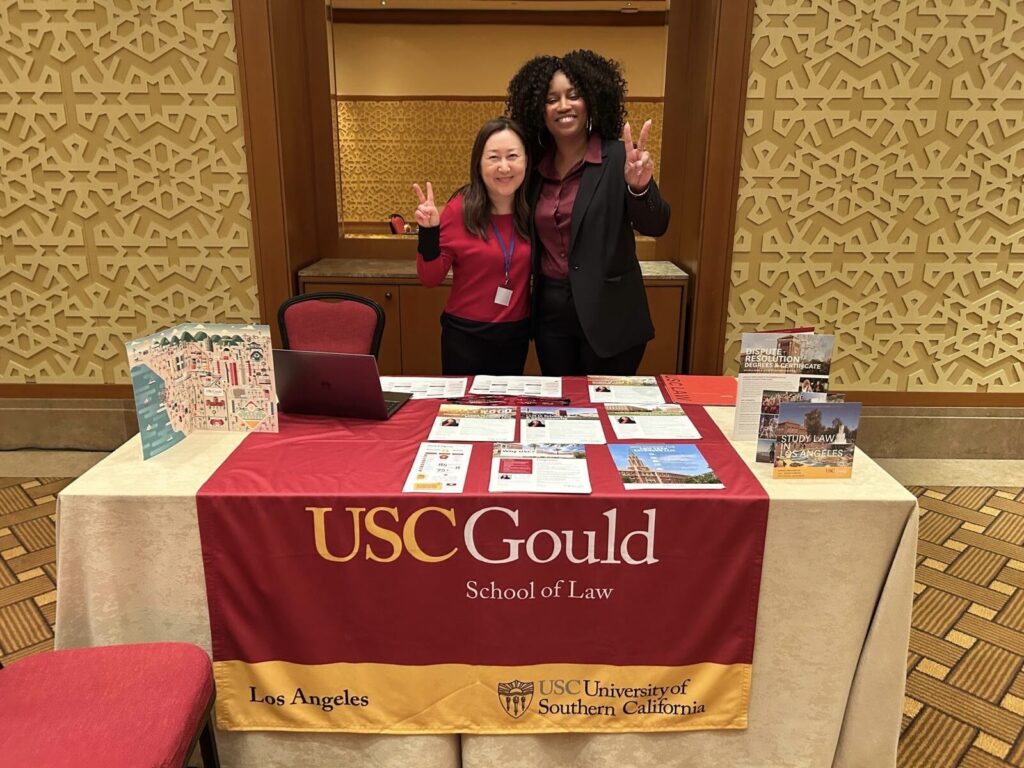Marisa Murillo (JD 2002) has put together multi-billion-dollar deals, but nothing compares to the rush of putting an unknown artist on the map.
The 47-year-old partner at Greenberg Traurig uses her access to the inner circles of corporate power and private wealth to launch promising young artists who otherwise wouldn’t get their foot in the door.
“I’ve always loved connecting people. It’s a natural part of what I do at work, and I’m good at it,” Murillo says. “I call it my superpower.”
A few years ago, she took two students from the School of the Art Institute of Chicago under her wing. She invited them to dinner parties, accompanied them to art fairs, and made introductions.
“They’re both in New York now at very good galleries,” Murillo happily reports. “It’s been a joy to do that for some younger artists I’ve met along the way.”
After 20 years in banking and finance law, Murillo has negotiated and documented complex transactions for top-tier commercial lending institutions, private and public companies, debt funds and private equity groups. Her practice spans manufacturing and automotive to retail, technology and energy.
But art remains her passion.
Cultured Texan
Growing up in Houston’s lively museum district, to Murillo the neighborhood’s Menil Collection, Museum of Fine Arts and Contemporary Arts Museum all felt like second homes.
In her teens, she discovered the glories of the National Gallery after her dad, an independent software developer, relocated the family to Washington, D.C. for a four-year consulting gig with the U.S. Navy.
When the family returned to Houston, Murillo continued her studies at St. John’s School, an arts-focused co-ed private academy with filmmaker Wes Anderson and journalist Molly Ivins among its notable alumni. She was admitted to Yale at age 16 through an early entrance program. Though ultimately persuaded by her pragmatic dad to major in economics, she generously peppered her course schedule with art history and photography electives. After graduating, Murillo received a scholarship to USC Gould, concentrating on transactions.
“I was always good with numbers,” she says, “and I felt like that kind of career would teach me about money—which it did—and allow me to do the other thing I loved, which is to collect art and be a patron of the arts.”
Balancing Big Law and Museum Boards
Murillo’s first job was in the legal department of Wachovia Bank in Winston-Salem, North Carolina, where her parents then lived. A car accident had left her mother with a serious spinal cord injury, and Murillo had moved to North Carolina after law school to help. She later switched to Wachovia’s outside counsel, Womble Carlyle Sandridge & Rice PLLC. With her mother’s recovered health, Murillo relaunched her career in 2005, joining the Chicago office of Kirkland & Ellis as an associate specializing in debt financing transactions.
Head-over-heels in love with the Windy City, Murillo nevertheless took a three-year detour to Detroit when General Motors, a top Kirkland & Ellis client, needed extra support through the TARP government bailout. Murillo became GM’s first and only in-house finance attorney in 2011.
Around the same time, she joined her first museum board at the Museum of Contemporary Art Detroit (MOCAD).
Newly divorced and with a 3-year-old daughter, Murillo had made herself a promise “to get back to my roots.” She set about learning the business of art—how to buy it, how to engage with collectors and emerging artists, how exhibitions are put together.
In 2014, when she returned to Chicago for a job with Katten Muchin Rosenman LLP, Murillo joined the Circle Donors of the Museum of Contemporary Art Chicago (MCA), becoming a leader on its “Emerge” committee, which pools member-donated funds to acquire a new addition to the permanent collection each year.
She went on to join the boards of the MCA, the Museum of Contemporary Photography and the Gene Siskel Film Center.
After a decade of participation in Chicago’s museum world, Murillo is now breaking into the Big Apple. She recently became a patron of the New Museum, where she serves on the Friends of the Triennial, which supports work by emerging artists.
She’s lately started moving into the independent film space with her backing of Three Colors: A Pan-African Trilogy. Murillo signed on as executive producer after a friend, Ayano Ichida (JD 1997), a USC Gould lecturer in law who teaches “Dealmaking in the Entertainment Industry,” introduced her to the filmmakers. The feature-length project, which is directed, scripted and produced by Black Trojan alumni, will tour the international film festival circuit when it’s released late next year.
Partner, Patron, Mom
Meanwhile, Murillo’s career as an attorney has flourished. In addition to overseeing a large banking and finance practice, she periodically contributes articles to the National Law Review and is active in many professional organizations.
Being a woman of color in finance law remains challenging. Murillo has changed firms several times over the last decade, on the lookout for an ideal home for her practice. “I don’t think anyone had any idea what to do with me,” she says. “There was no paradigm, really, for being a woman partner, especially not in the financial sector. At each firm, it felt like I was an astronaut, trying to be the first to do something.”
Murillo has developed a large book of business over the years. As for Greenberg Traurig, she says, “I’m the only finance partner in the Chicago office, so I get to develop the practice and build out the portfolio, clients and projects. It gives me room for creativity.”
Though women in finance law remain “few and far between,” Murillo says, “it’s changing for the better. I meet many more women at professional events now.”
Often by her side at different events is 15-year-old Pilar. “She’s my plus-one for many things,” says Murillo, of her daughter. They travel and go to gallery openings together. “If I’m buying art, Pilar will help me pick works.”
The walls of her duplex condo, which Murillo shares with her parents and daughter, are lined with photography and collage on paper—the focus of her collecting. A few works are gifts from artists she’s helped, like ceramist Theaster Gates. But most are the product of purposeful acquisition: pieces she loves by artists she deeply admires, such as photographers Stephanie Syjuco and Mickalene Thomas, conceptual artist Derrick Adams and sculptors Kevin Beasley and Pedro Reyes. She’s in the process of acquiring her first oil painting by Chicago-based artist Caroline Kent.
Murillo’s relationship to these artists is multidimensional—she is both a patron and a friend. “I go to every opening, gallery event or party for the artists I support,” she says.
A few years ago, she started “dabbling in philanthropy in a targeted way” by sponsoring various Chicago-based exhibitions featuring artists of color—an Art Institute of Chicago show around Kehinde Wiley’s Obama portraits, another focused on South African textile artist Igshaan Adams, and others at the MCA spotlighting artists like sculptor and designer Nick Cave and artists from the Caribbean diaspora.
Now Murillo is expanding the scope of her philanthropy. She’s backing a major retrospective of visual artist Arthur Jafa, who got his start as cinematographer on Spike Lee’s early films. The exhibition opens in 2025 and will occupy several floors of the New Museum in Manhattan. Jafa’s work, Murillo says, is too intense to attract major corporate sponsors, so she answered the call when “the museum had to find individual donors.”
The Next Chapter
Murillo is already thinking about changes she’ll make in what she playfully calls her “non-mom stage,” once Pilar leaves for college.
She’s eager to get more deeply involved in backing independent filmmakers.
“I have this incredible network from my work-life and my art-life. What new possibilities could present themselves with film?” she wonders, her eyes wide in excitement.
Recently, she’s been working on connecting a Detroit filmmaker, whose project calls for period costumes and elaborate artistic direction, with Nick Cave, who can assist with the initial specs.
“I love the idea of helping independent filmmakers create content that would otherwise not make it to the public sphere because they just don’t have the resources,” she says.

















